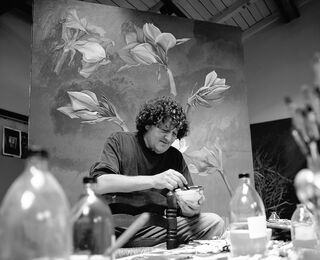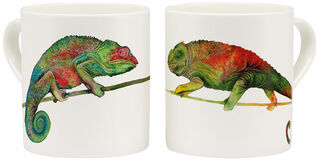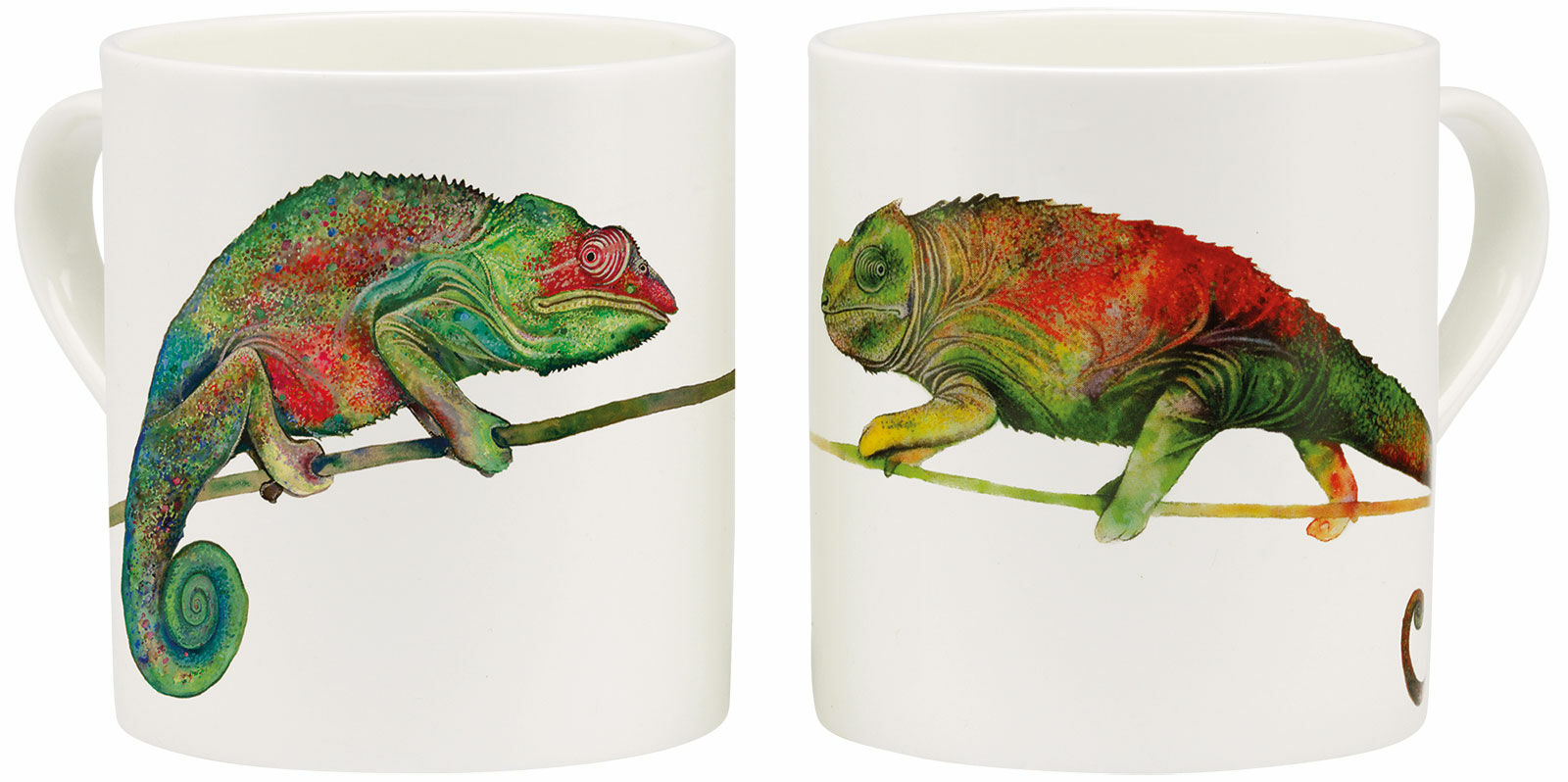Set of 2 mugs "Chameleons", porcelain
Set of 2 mugs "Chameleons", porcelain
Quick info
ars mundi Exclusive Edition | signed | porcelain | capacity 0.36 l each | dishwasher safe | only available as a set
Detailed description
Set of 2 mugs "Chameleons", porcelain
It is no surprise that the colourful, colour-changing chameleon fascinates artists like Bruni. He depicts it in his prints "Camaleonte" and "Più imparo a conoscere la gente più amo gli animali" ("The better I know people, the more I love animals"). ars mundi has exclusively brought the motifs onto fine bone china porcelain. A colourful start to the day. Capacity 0.36 l each, dishwasher safe. Signed ars mundi Exclusive Edition. Set of 2 mugs.
Customer reviews

About Bruno Bruni
Born in 1935, Italian painter, graphic artist, and sculptor
"Art must be for everyone."
Truly a life devoted to art: Bruno Bruni, an internationally celebrated and successful painter, graphic artist, and sculptor, has been working as a freelance artist for more than six decades, creating a broad and extensive oeuvre that inspires collectors and art lovers worldwide.
Without being committed to any particular school, he developed an individual style early on, based on figurative elements, such as those reminiscent of the Renaissance and Mannerism but also revealing other influences, such as those of Surrealism. Bruni's depictions often radiate a beguiling beauty and grace, which he skilfully contrasts with elements like missing faces. His choice of motifs is also impressive, with its very diverse subjects. On one hand, there are his classics, which he repeatedly varies and combines, such as sensual female nudes, the trench coat, or the amaryllis. On the other hand, he also creates thoughtful moments with motifs such as the Warsaw Ghetto, Sophie Scholl, Anne Frank, Rosa Luxemburg, or Che Guevara.
Colour lithography, in particular, allows Bruni a high degree of spontaneity and freedom during the process of creation. His slender female nudes, still lifes and delicate floral motifs take on an erotic charm through their graphic expression. His flower still lifes are reminiscent of Albrecht Dürer's graphic studies of nature. However, Bruni is not just concerned with the detailed reproduction of the motif but with the sensual radiance of the floral objects. Typically for his drawings, the dominant element is the line, which seems to be in constant flow and balance. The motif is defined by the beautifully curved serpentine line. The little-structured internal form invites the viewer to intensively follow the contour.
Bruno Bruni was born in 1935 in Gradara, Italy, and grew up in poor living conditions. Already as a child, Bruni started painting and in 1953, he began studying at the Istituto d'Arte di Pesaro. In 1960, he transferred to the Hochschule für Bildende Künste in Hamburg, where he was accepted without any entrance examination and studied under the painter and graphic artist Georg Gresko, later under Paul Wunderlich. In 1965, Bruni left the university – without graduating. But he was already able to sell his first paintings and received a scholarship from the Lichtwark Prize of the City of Hamburg in 1967. In 1968, in protest against the mechanisms of the art market, he co-founded the cooperative "CO-OP" with other artists, and a little later, he achieved the breakthrough he deserved. Yet despite all his success, Bruni was then as he is now, an authentic artist who neither allows himself to be taken over by the art business nor follows trends. He has also never identified with the elitist pretensions of the art scene. "Art has to be for everyone," he says, and not just for rich people.
Since he began exhibiting, Bruni has presented his works in numerous art houses, including London, Rome, Munich, Milan, Amsterdam, Tokyo, New York, Zurich, and St. Petersburg. In 1977, he was awarded the renowned "International Senefeld Award" for his lithographs, and in 2003, he received a very special honour for his services to contemporary art - the title "Official Knight of the Republic of Italy". In 2014, Bruni received an honorary doctorate from the Russian-Armenian University in Yerevan.
Graphic or sculpture edition that was initiated by ars mundi and is available only at ars mundi or at distribution partners licensed by ars mundi.
Ceramic product made of kaolin, quartz and feldspar.
Porcelain is formed by turning or pressing and figurative objects are cast. Complex objects have to be cast in separated steps and sections and then "assembled". After the moulding, the pieces are dried and "annealed" at about 900 °C. Next, the glaze will be applied and fired at temperatures between 1,240 °C and 1,445 °C. In renowned manufactures, the porcelain is painted by hand whereby each colour has to be fired individually and in compliance with narrow temperature tolerances.
Porcelain was invented in China and became widespread in Europe from the 16th century onwards. The first European porcelain factory was founded in Meissen, Germany in 1710.
Other famous European porcelain factories include Fürstenberg, Höchst, Schwarzburger Werkstätten, Lladró, Nymphenburg, KPM, Augarten, Sèvres, Limoges, Royal Copenhagen, Worcester. Individual factories label their products with their personal porcelain stamps so that for the collecter it is easy to identify their origin.


